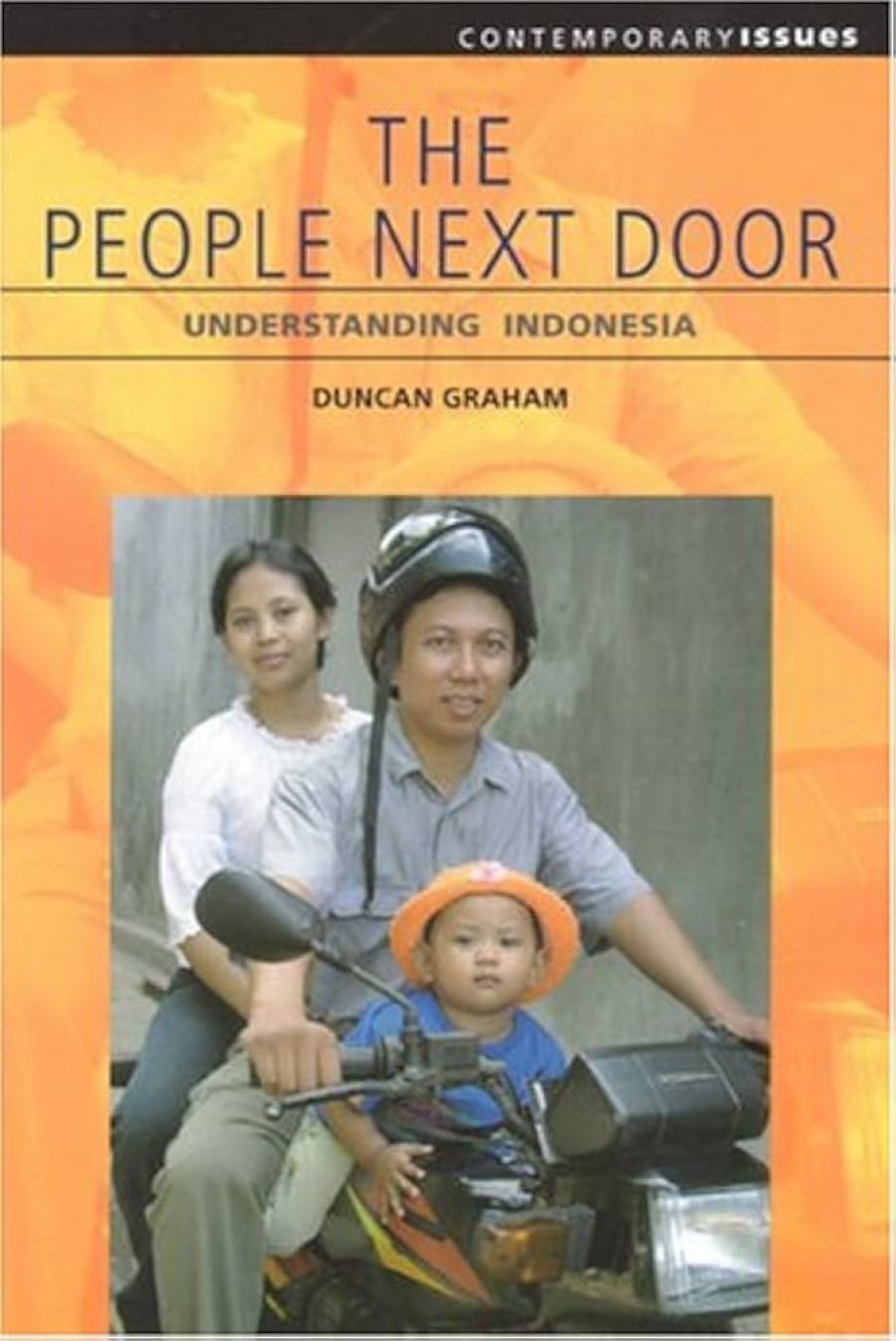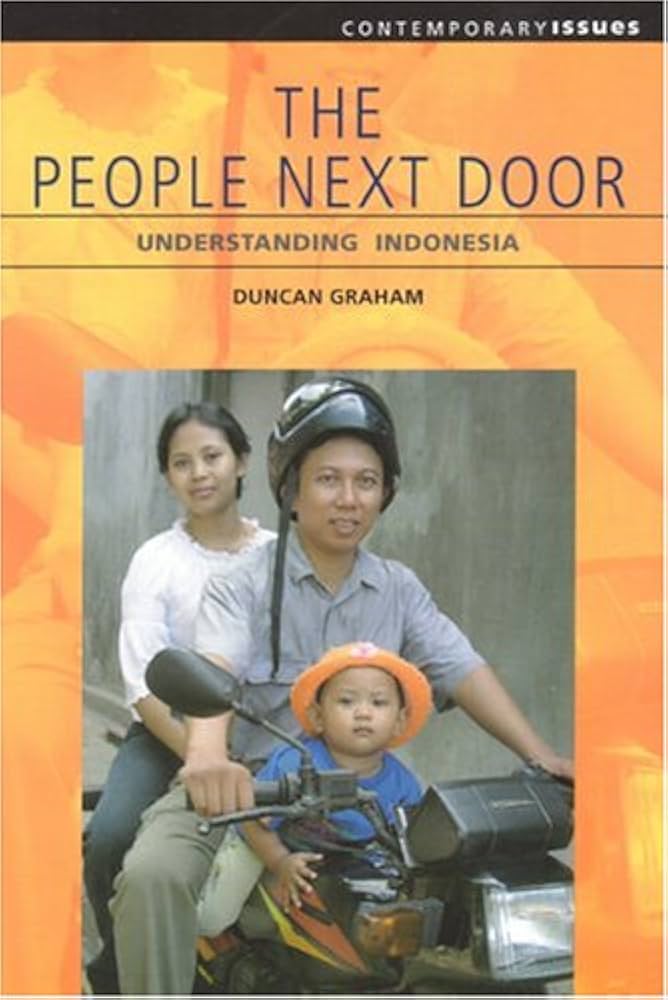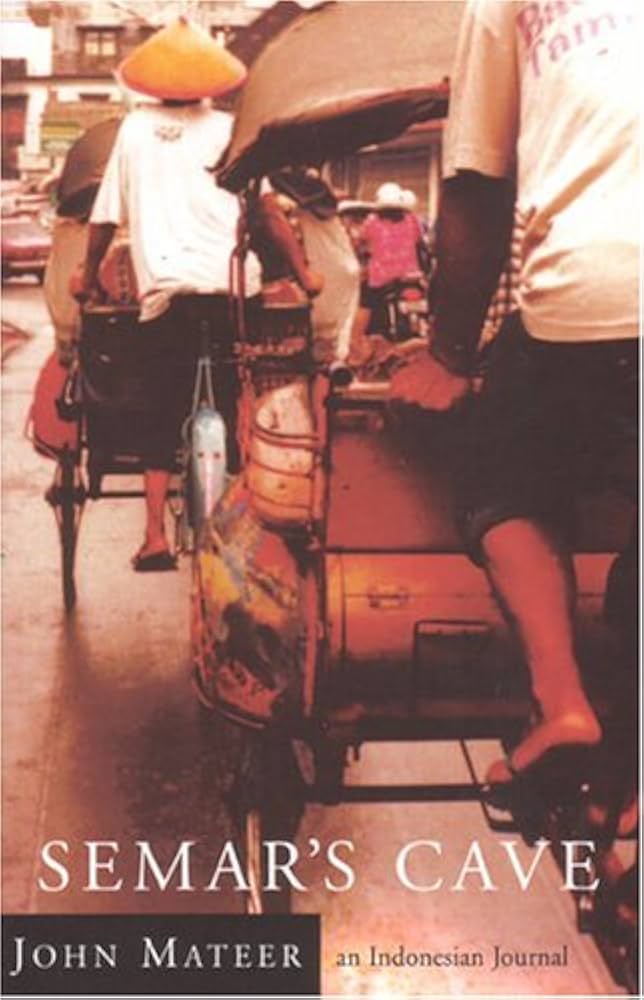
- Free Article: No
- Contents Category: Indonesia
- Review Article: Yes
- Article Title: Nice people like us
- Online Only: No
- Custom Highlight Text:
All good people agree
And all good people say
All nice people like Us, are We
And everyone else is They
Rudyard Kipling - Book 1 Title: The People Next Door
- Book 1 Subtitle: Understanding Indonesia
- Book 1 Biblio: UWA Press, $38.95 pb, 205 pp
- Book 1 Cover Small (400 x 600):

- Book 1 Cover (800 x 1200):

- Book 2 Title: Semar's cave
- Book 2 Subtitle: An Indonesian journal
- Book 2 Biblio: FACP, $24.95 pb, 335 pp
- Book 2 Cover Small (400 x 600):

- Book 2 Cover (800 x 1200):

The bombing of the Australian Embassy in Jakarta on 9 September 2004 dramatised the increasing vulnerability of these relations. Threats such as those posted on the Jemaah Islamiyah website in the aftermath of this tragedy, warning Australians to leave Indonesia, suggest that it might become increasingly difficult for Australians to visit Indonesia, let alone to overcome such fears. And yet, these events simultaneously highlight that now, more than ever, it is imperative for both countries to transcend their differences and to stand united against terrorism.
The People Next Door is motivated by a desire to engage more Australian interest in a nation ‘so vast and deep’ that it cannot be imprisoned ‘between the covers of a book’. To achieve this, Graham focuses upon East Java, the region of Indonesia he has worked in for more than twenty years. In doing so, Graham acknowledges his limitations: ‘Every person and incident is a snapshot in time and place. A truth in Surabaya may be a lie in Medan.’ His argument is·simple – acknowledge the risk of generalisation, but tell what you know.
To introduce us to his second home (Graham divides his year between Java and Western Australia), the author embarks upon a circuitous, even meandering, discussion of culture, religion, lifestyle and nationalism in Indonesia. He quotes from Indonesia’s leading thinkers and invites us into places where many Australians would fear to tread. One such place is Kampung Trisnomulyo (village of love and dignity), the town where Amrozi, one of the Bali bombers, once lived. In an interview with one of Amrozi’s peers, we learn that the village was set up to help the homeless and that residents donate money each day towards the administration of its rapidly expanding and under-equipped population. Graham leads us through a local peasant ren (Islamic boarding school) where ‘the 350 poor, dispossessed and discarded men, women and children are packed into darkened dormitories in First Fleet conditions.’ Is it any wonder, he asks, that such ‘explosive’ places might be breeding grounds for suicide bombers?
We are taken to a suburban backstreet where a young bull is being prepared for Idul Adha, the festival of sacrifice. Graham observes the bull being cared for in the months prior to its sacrifice. He sketches the execution scene, including efforts made to reduce the bull’s pain. While Graham exposes the reader to a tradition that might be considered brutal to a Western audience, his thoughtful portrayal resists stereotypes and ensures that the ‘other’ is made human.
Graham’s book also includes an overview of Indonesia’s colonial and national history, infused with insights into the many particularities of Indonesian culture, lifestyle and nationalism. The penultimate chapter, ‘The “Doers” of Indonesia’, is devoted to people who have contributed to the nation, sometimes through acts of harrowing resistance. Here, the voices of the Indonesians come to life to challenge the Australian assumption that Indonesia is an oppressive nation-state. Frank discussions with gay activists, university students and street vendors celebrate the freedom that followed the fall of Suharto and address other social justice issues, such as Indonesia’s most notorious acronym: KKN – Korupsi, Kolusi, Nepotisme.
Here is a book that walks the streets and captures the unique sounds and sites of Indonesia, and in doing so, offers Australian audiences a way of engaging in a nation that is both the world’s largest Muslim country and its third largest democracy.
In contrast, John Mateer’s portrayal of Indonesia in Semar’s Cave: An Indonesian Journal begins with the narrator refusing to present an objective account to his readers. Instead, he promises us ‘more detail than opinion’, ‘real images instead of thoughts’. Before arriving in Indonesia, Mateer confides to a friend that he is concerned that government cultural programmes, such as the one funding his visit to Medan, use artists to ‘naturalise a foreign presence’ in a country. Although Mateer has reservations about Indonesia and his own political complicity, his interest in Indonesia’s Dutch colonial history (informed by his South African childhood) allows him to put these concerns to one side.
The poet records his day-to-day activities, such as negotiating Indonesia’s throbbing traffic. Entries are peppered with snippets of conversations with poets, tourist guides and a range of expatriates. Social obligations such as· poetry readings and embassy events are interwoven with transformative excursions to Lake Toba in Sumatra, Borobudur temple in Yogyakarta and Sukarno’s monumental MONAS statue in Jakarta. The complexities of the country come to life through Mateer’s prose, but the reader is always conscious of the poet’s reluctance to engage.
The body of this Indonesian journal is punctuated by six poems, which provide snapshots of the poet’s experiences. While these capture the sense of isolation that often accompanies travel, they are occasionally obscured by a preoccupation with revelatory experience. In the conclusion to three different poems, for instance, the writer surrenders to the transcendental, which he has discovered respectively in the Azan (the Muslim call to prayer), a rock from Lake Toba and a bell that sounds through the blacked-out streets of Medan. On several occasions, italicised Indonesian words are used, but not referenced in the less-than-twenty-word glossary. Dashes, brackets and even a colon at the end of one poem arc used – no doubt to ‘interrupt’, as we were warned in the preface, ‘the norms of story telling’ – but if the writer’s intention is to convey the traveller’s sense of dislocation, the effect is also to disengage the author from his reader.
Poetry might be ‘big in Indonesia’, as one of Mateer’s characters tell us, but it is not surprising that Mateer’s poetry is not well received by the Indonesians. In contrast to Indonesian poetry, which is often used to negotiate political issues in a way that reflects the Javanese predilection for mysticism, Mateer’s writing appears detached and removed. At one reading, an emerging Indonesian poet mimics the nervous Mateer, while, at another reading back in Australia, an audience member comments that poems are ‘too much in his head’. To his credit, and at his own expense, Mateer recounts these stories, and yet the sense of inversion remains.
Mateer’s delicate prose is soured by the ambivalent, even suspicious, nature of the narrator. In contrast to Graham’s interest in humanising the Indonesians through the story of the Idul Adha, Mateer is fascinated and repelled by Indonesia in a way that sometimes smacks of sensationalism. At a bird market in Yogyakarta, the Buddhist poet is so disgusted by the treatment of a caged Komodo dragon that he recoils from the stall owner. When the man pursues Mateer, the author bounds away up stone stairs towards a temple.
Together, these books provide examples of the different ways that Australians view and relate to Indonesia. From the pen of the seasoned Indonesian scholar, Indonesia is portrayed as a complex but inviting world populated by people not so different from Australians. In the hands of Mateer, Indonesia becomes a place of intrigue, ambiguity and dislocation. Read together, however, both accounts provide a chiaroscuro of contemporary Indonesia, evoking not only its scents and sounds, debates and dilemmas, but also its many lights and shadows.


Comments powered by CComment